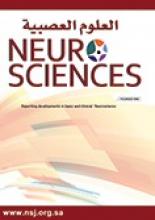Abstract
OBJECTIVE: To examine whether adjuvant temozolomide treatment improved glioblastoma patients’ survival in a large Canadian cohort.
METHODS: We retrospectively studied 364 glioblastoma patients who received different modalities of treatment in 2 Canadian tertiary care centers in Edmonton and Halifax, Canada, between January 2000 and December 2006. The primary outcome was survival following the treatment protocol.
RESULTS: The following variables were associated with an increased risk of death: The hazard risk (HR) of on-gross total resection was 0.50 (95% confidence interval [CI]: 0.39-0.64). The HR for the surgery-only group was 5.2 (95% CI: 3.85-7.06). The standard treatment group (surgery, radiation therapy [RT], and temozolomide) had an HR of 0.52 (95% CI: 0.37-0.74). The HR for patients who presented with seizure or whose presentation included seizures was 0.88 (95% CI: 0.55-0.89). Patient entry into trials had an HR of 0.74 (95% CI: 0.57-0.96). Finally, the HR for age was 1.02 (95% CI: 1.01-1.03) for every extra year.
CONCLUSION: Concomitant temozolomide with RT and surgery was associated with longer survival compared with RT with surgery alone. We also found that younger age, surgical resection, seizure presence, and entry into trials are important prognostic factors for longer survival.
- Copyright: © Neurosciences
Neurosciences is an Open Access journal and articles published are distributed under the terms of the Creative Commons Attribution-NonCommercial License (CC BY-NC). Readers may copy, distribute, and display the work for non-commercial purposes with the proper citation of the original work.






